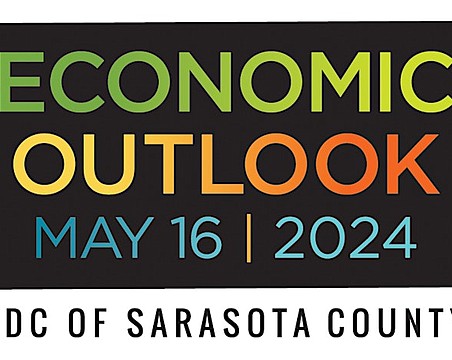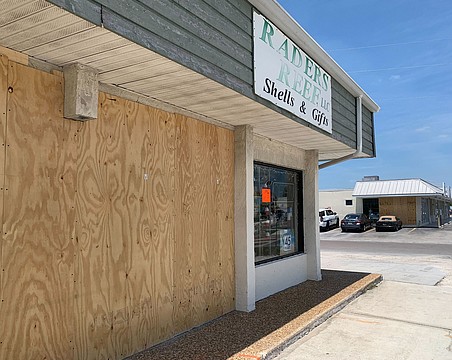Southwest Florida's strong job growth and population influx is boosting commercial real estate sectors throughout the region, and while there are indications that a commercial property bubble may be forming elsewhere in the U.S., Charlotte, Lee and Collier counties appear poised for further growth.
That was the message a panel of economic experts sent to a recent gathering of commercial real estate professionals associated with the prestigious CCIM Institute, a leading industry trade group that seeks to educate agents.
“There is some justification for saying we may be in the early stages of entering a commercial real estate bubble,” says Lawrence Yun, chief economist for the National Association of Realtors, a Chicago-based trade group that has more than 1.1 million members throughout North America.
Yun notes that commercial property prices have risen 60% since 2012 in the U.S., far outstripping residential appreciation or yields from other investments. That phenomenon has caused investors to flood markets nationwide, pushing up prices to levels that will require vast rental increases to support deals — on top of anticipated interest rate hikes.
“But that may not apply to Southwest Florida in the same way it would in, say, a San Francisco, Washington, D.C., or Boston,” says Yun.
Thanks to job growth and household formations in the three counties that has outpaced Sarasota and much of the Gulf Coast -- though the Orlando area continues to lead the state in job creation — the region remains healthy. There's ample runway left in the multifamily and especially industrial sectors.
The latter has grown in popularity as online commerce has gained traction among consumers as never before. “People are clicking, clicking, clicking, but those merchants need warehouse space to fulfill those deliveries,” Yun says.
Fort Myers, in particular, has been viewed as a hub for Southwest Florida industrial space because of its fairly centralized location in the region and proximity to Interstate 75. The location has prompted at least one development firm to consider building speculative industrial space in the area for the first time in several years.
By contrast, a handful of developments in the Interstate 4 corridor between Tampa and Orlando — an area that can reach roughly 18 million Floridians within a 24-hour drive — could deliver more than 2 million square feet of new distribution space on a spec basis this year.
“We've seen e-commerce just decimate commodities; we saw it with books and now we've seeing it with clothes, which is something that I never thought we would see,” says Brian Bailey, a commercial real estate expert with the Federal Reserve Bank of Atlanta.
He adds that multifamily development and value hikes during the current commercial real estate growth cycle have risen more than 35%.
“Southwest Florida has just been on a tear,” Bailey says. “But nationwide, too, the sector has had a phenomenal run the past six years.”
At least part of the surge in interest in commercial properties has come from foreign investors looking to maximize yields and park capital in “safe haven” investments like U.S. real estate, Bailey notes. In 2011, for instance, foreign buyers spent less than $10 billion on commercial projects. Last year, that figure skyrocketed to $80 billion.
Southwest Florida's office market may yet receive a bump from foreign capital and macro trends, as well, as some investors have begun to search tertiary markets for higher capitalization rates and technology broadens where work can be done.
And while Yun and others say there appears to be little chance of an economic recession imminently, ominous signs abound that could dramatically impact Gulf Coast commercial real estate markets.
Although U.S. wealth sits at an all-time high, stock market gains have been concentrated among just 10% of the nation's total population, Yun says, and wage growth has been stagnant among middle-class workers.
At the same time, businesses capital orders overall are falling, and auto loan delinquencies, which were roughly 4% in southern states in 2006, climbed to more than 10% last year.
“There are some pretty serious delinquencies that we're seeing, and that's of concern,” says Bailey, who notes auto dealers aggressively incentivized consumers with short-term, low-interest loans to boost sales beginning in 2010.
The office market also faces challenges from technology that is causing office usage to shrink and that is allowing people to work remotely.
“More and more work is being done now on your device, and not at your desk,” says Adam Palmer, a principal and managing director of Fort Myers-based LandQwest Commercial Real Estate Services.
Ultimately, though, the biggest threat to the current commercial real estate growth cycle may be time itself, experts told the 17th annual CCIM gathering, held at the HarborSide Event Center in downtown Fort Myers Jan. 19.
“We're now in month 91 of our economic expansion,” Bailey told a crowd of more than 400. “The average expansion, historically, going back to 1945, has been 94 months. That's why we're starting to see more risk in the commercial real estate lending environment now.
“The fact is,” Bailey adds, “the longer this expansion goes on, the more risk there is going to be going forward.”





